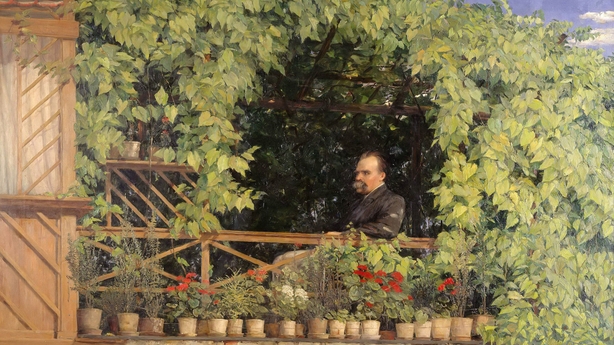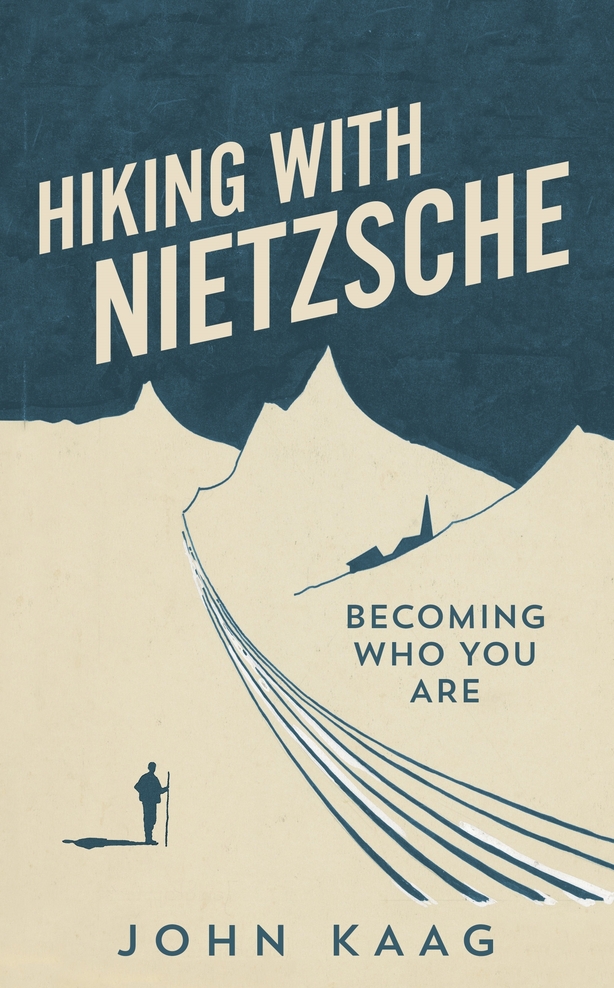John Kaag, who is Professor of Philosophy at the University of Massachusetts offers an off-beat, painfully honest memoir of two trips to the Swiss Alps intermingled with close, sturdy analysis of the writings of the philosopher Friedrich Nietzsche.
When he was 19, Kaag, the young philosophy student, was encouraged with the help of a grant - an envelope with $3,000 dollars, in fact - from his university faculty to spend time in the Swiss Alps. Thus the callow youth would follow in the footsteps of his idol, the philosopher Friedrich Nietzsche (1844-1900.)
Following an indifferent few days in Basel, Kaag would endure what can only be described as a dark night of the soul in the Sils Maria region of the Swiss Alps. Sleeping in one of the spartan rooms of the house where Nietzsche used to stay in summer, he tested himself to an extreme degree through arduous hiking on the Alpine slopes above Sils Maria. He would also starve himself, in what he later recognises as anorexia. Indeed, the sight of his emaciated physique frightened his poor mother out of her wits when she met him at the airport on his return to the USA. His father left the family when he was four, and his absent father is a shadowy presence in the story.

Now, 17 years later, and on his second marriage, to Carol – a devotee of Kant, not a Nietzschian - and with their five-year-old daughter Becca in tow, Kaag returns to Sils Maria. Like many a fanciful, middle-aged man, he is attempting to revive the experiences of his youth, exploring the Nietzschian routes and mountain paths again. He spends the family holiday thinking intently and obsessively about the philosopher. He reflects on the bleak Dionysian and his cheerless tenets - or bleak home truths, if you will - which emphasised the inevitability of suffering and how humankind had best incorporate suffering almost logically into living a life.

On this second visit, Kaag chooses to billet himself and his family in the huge hotel, the Waldhaus, which he had spotted in the distance on that first visit in the 1990s. The oak-paneled, tasteful rooms of this venerable inn entrance Kaag, as does its reputation. That rests in large partly on the fact that Theodore Adorno and Thomas Mann once stayed there, and that there are Richter paintings on the walls.
Ultimately, Kaag concludes in his 250-page work - whose subtitle is Becoming Who You Are - that his return visit was not a great idea. In large part, he is the author of his own misfortune and he knows it. On one occasion, he sets off hiking without telling wife or daughter and returns after many hours to a spouse who is incensed at his lengthy absence. "Where the f*** were you?" She curled her lips back and whispered through bared teeth.
Ill-judged the return journey may have been, but in the course of Kaag’s honest musings on his own vulnerabilities and boyhood, allied to his close reading of Nietzsche’s writings, his family adventures and anecdotes, we gain a vivid picture of the author. The Nietzsche commentary is the meat in the sandwich, as it were. Kaag is an author who lays his cards on the table – being a husband and parent is not always easy, particularly when your head may be heading for the clouds above Sils Maria.







